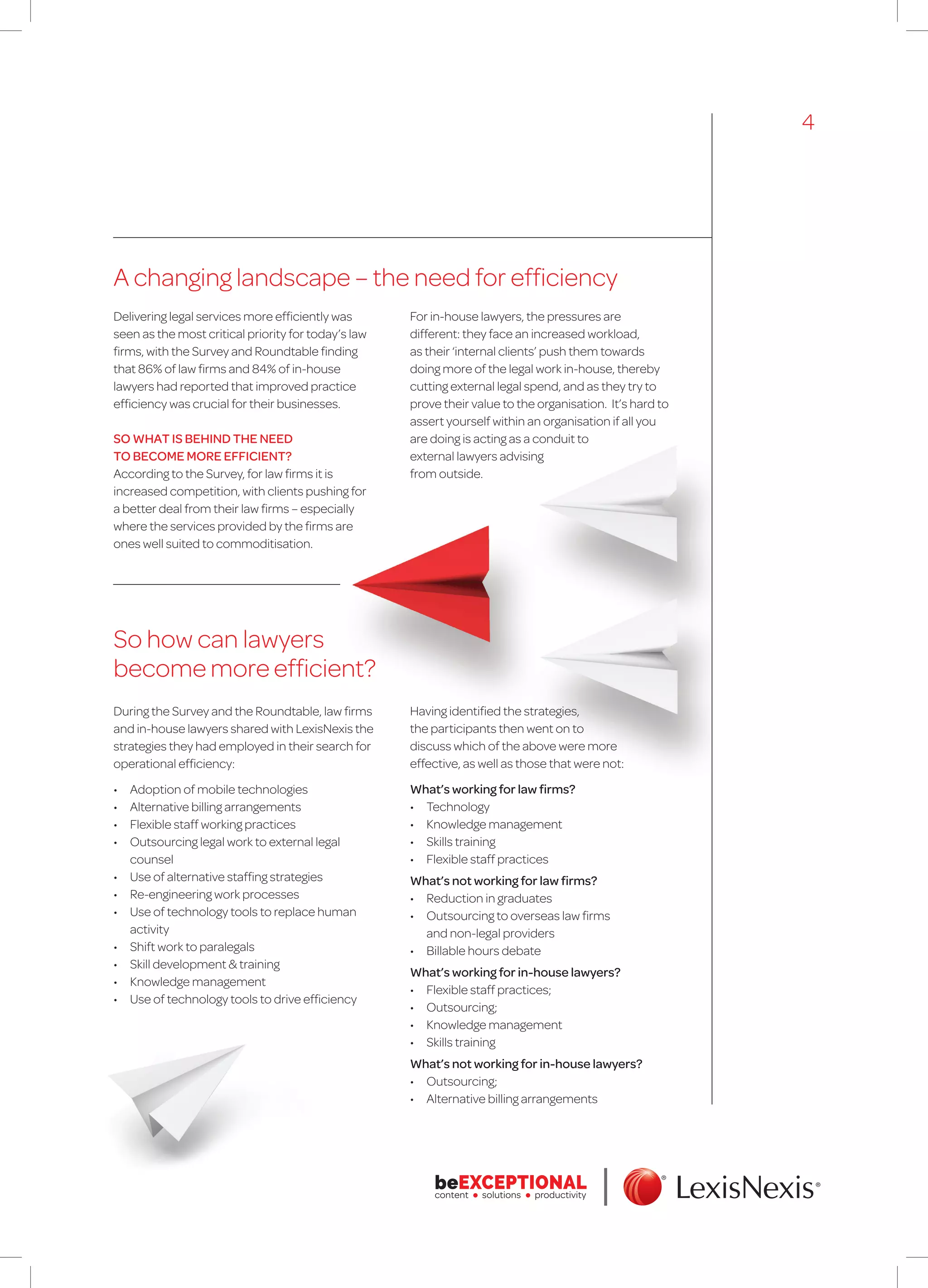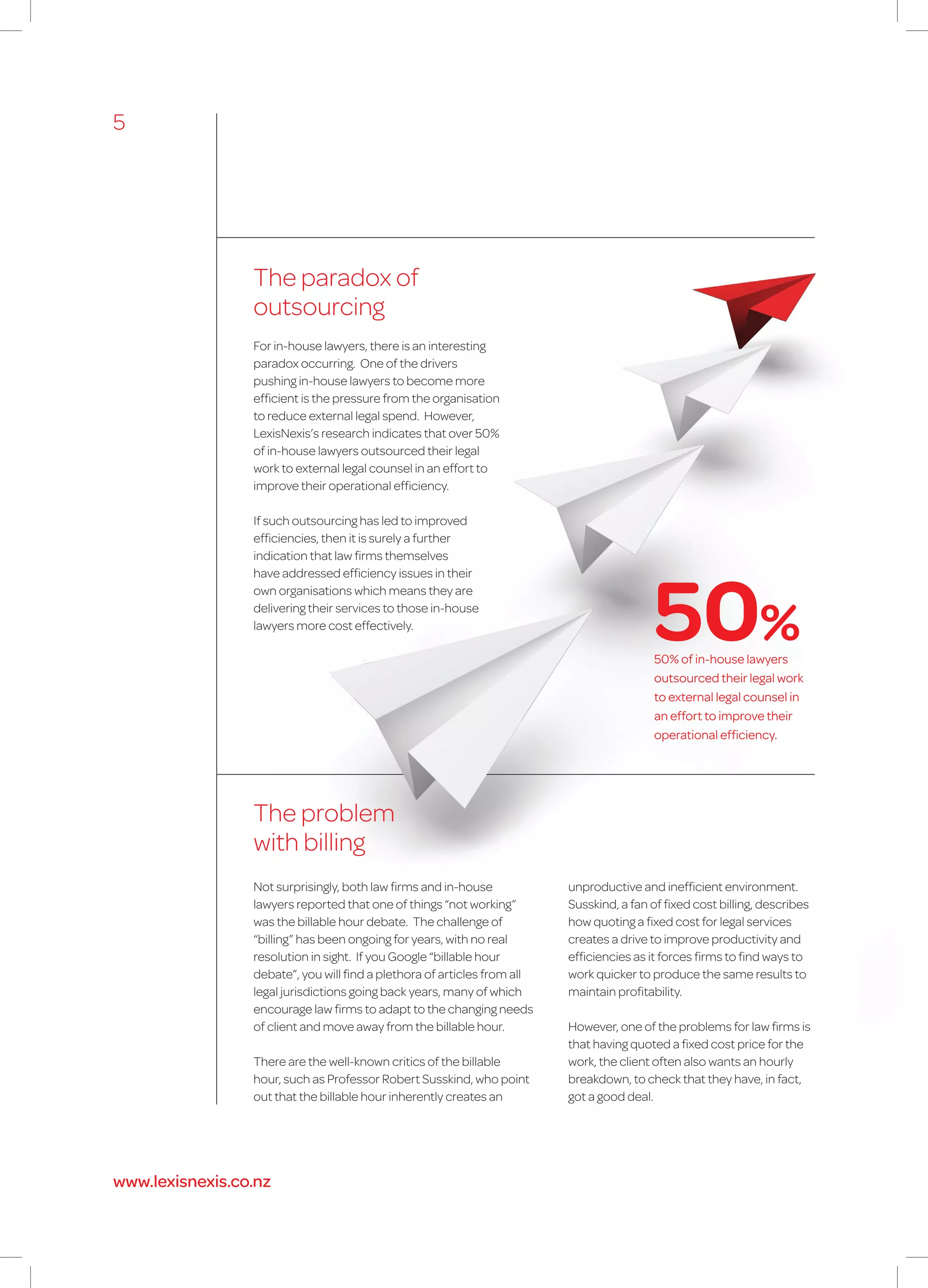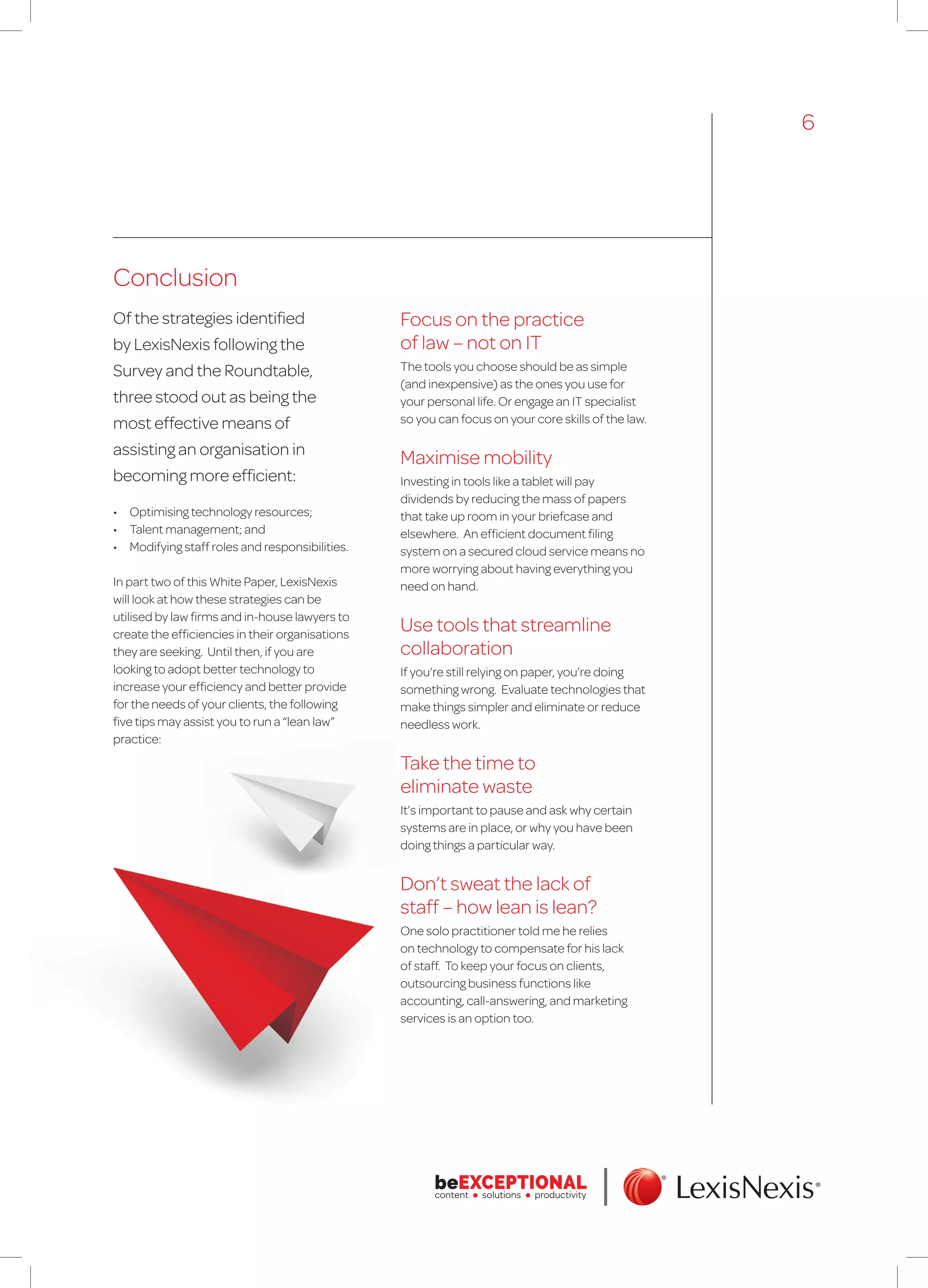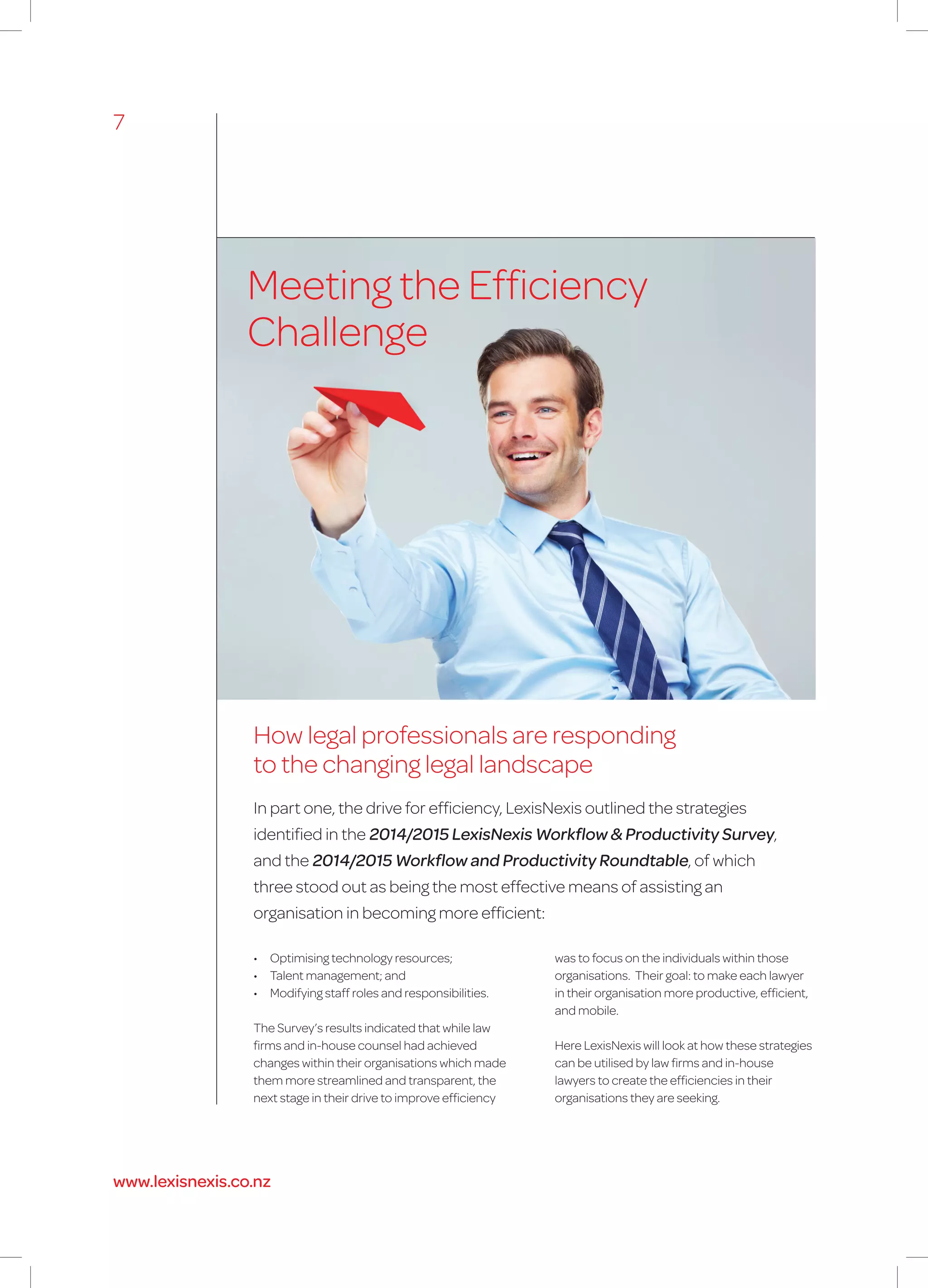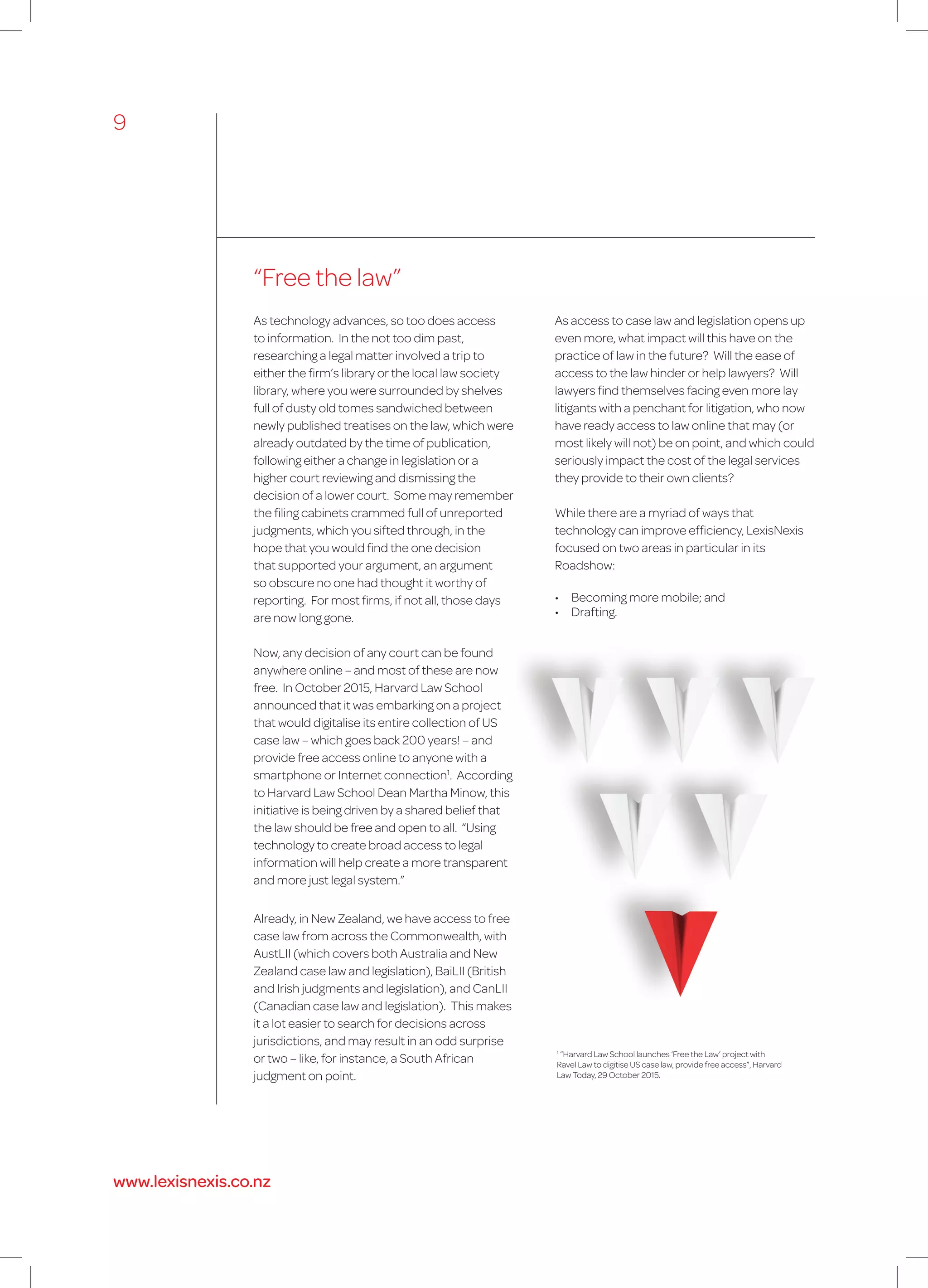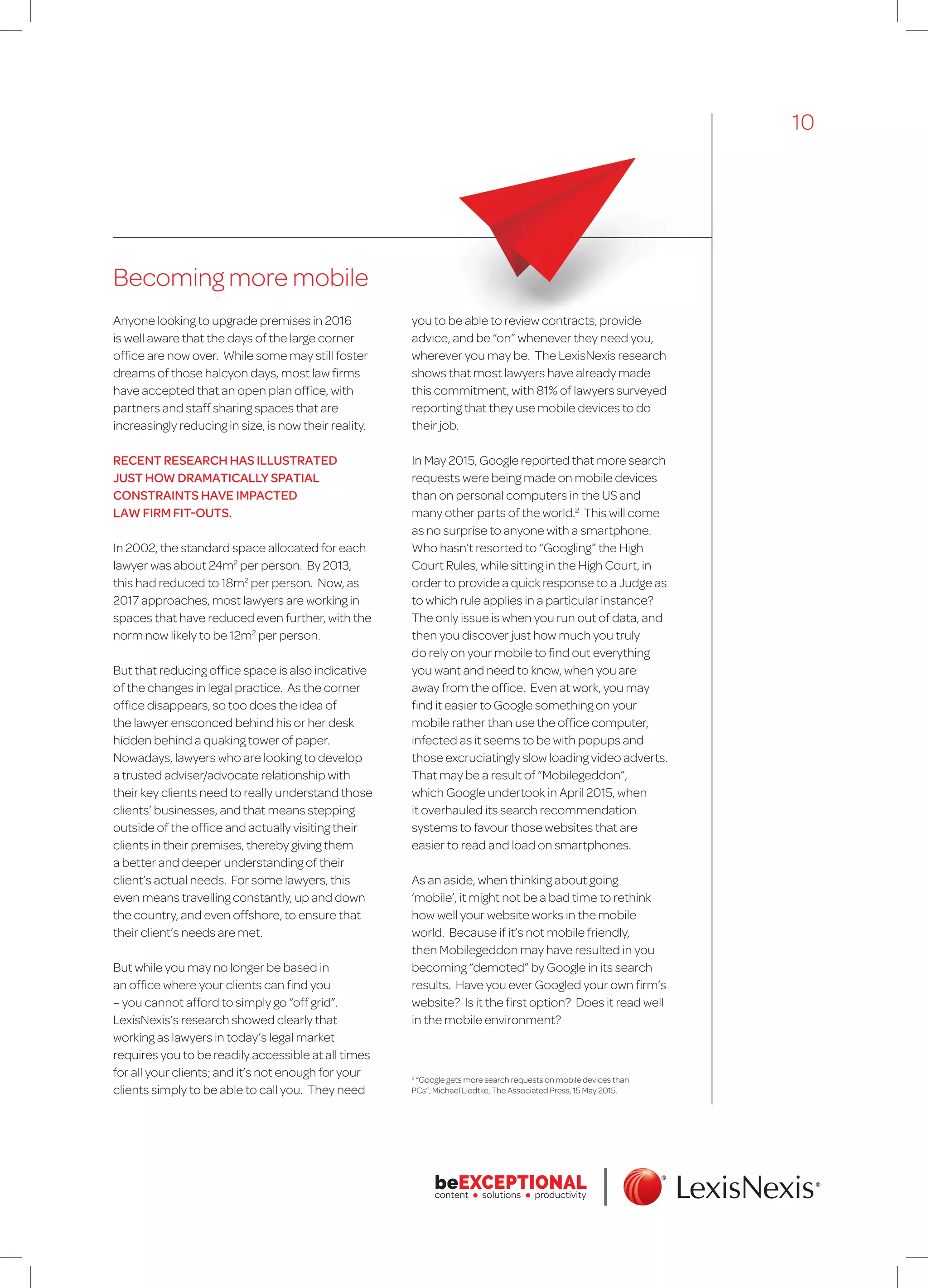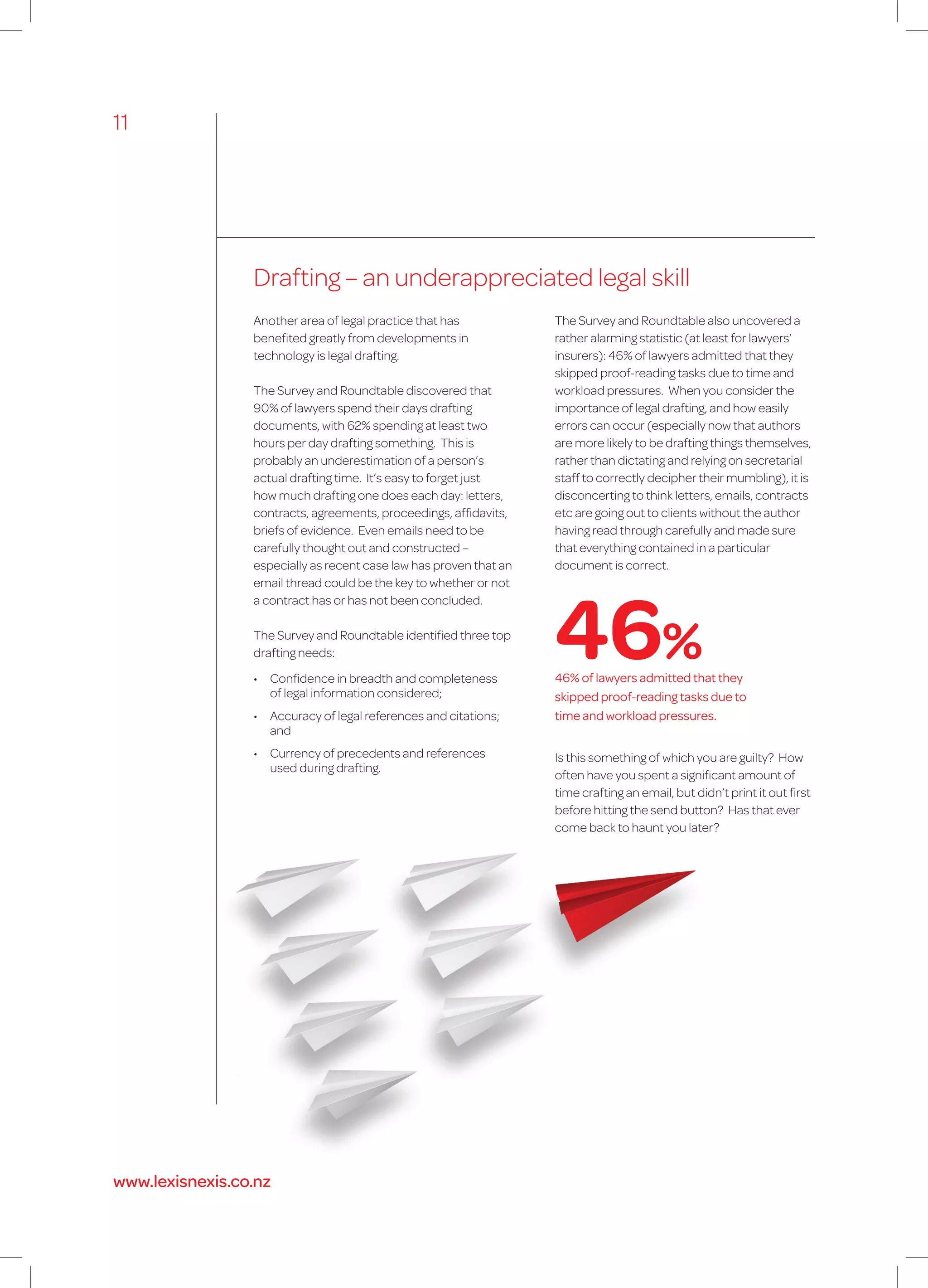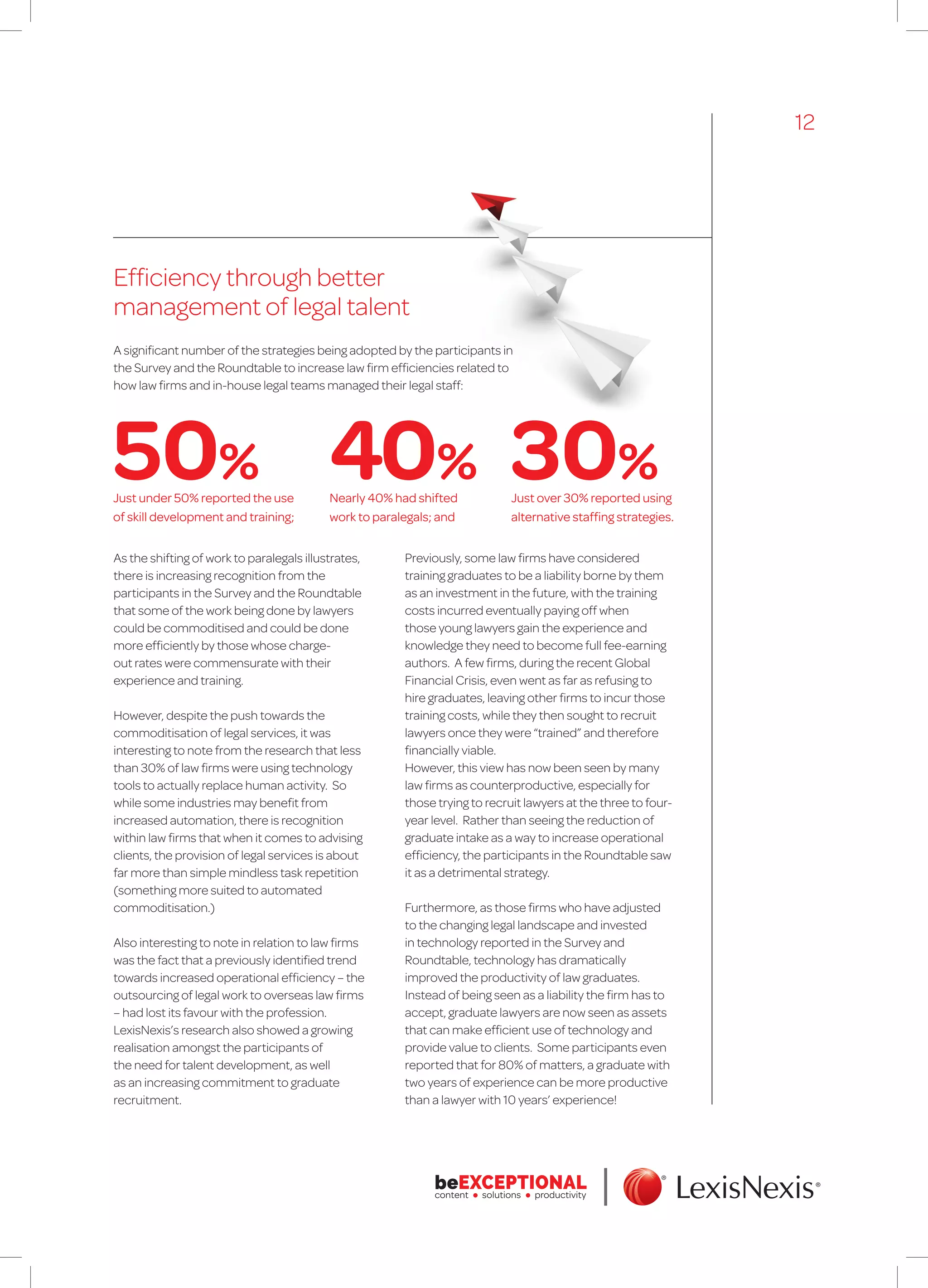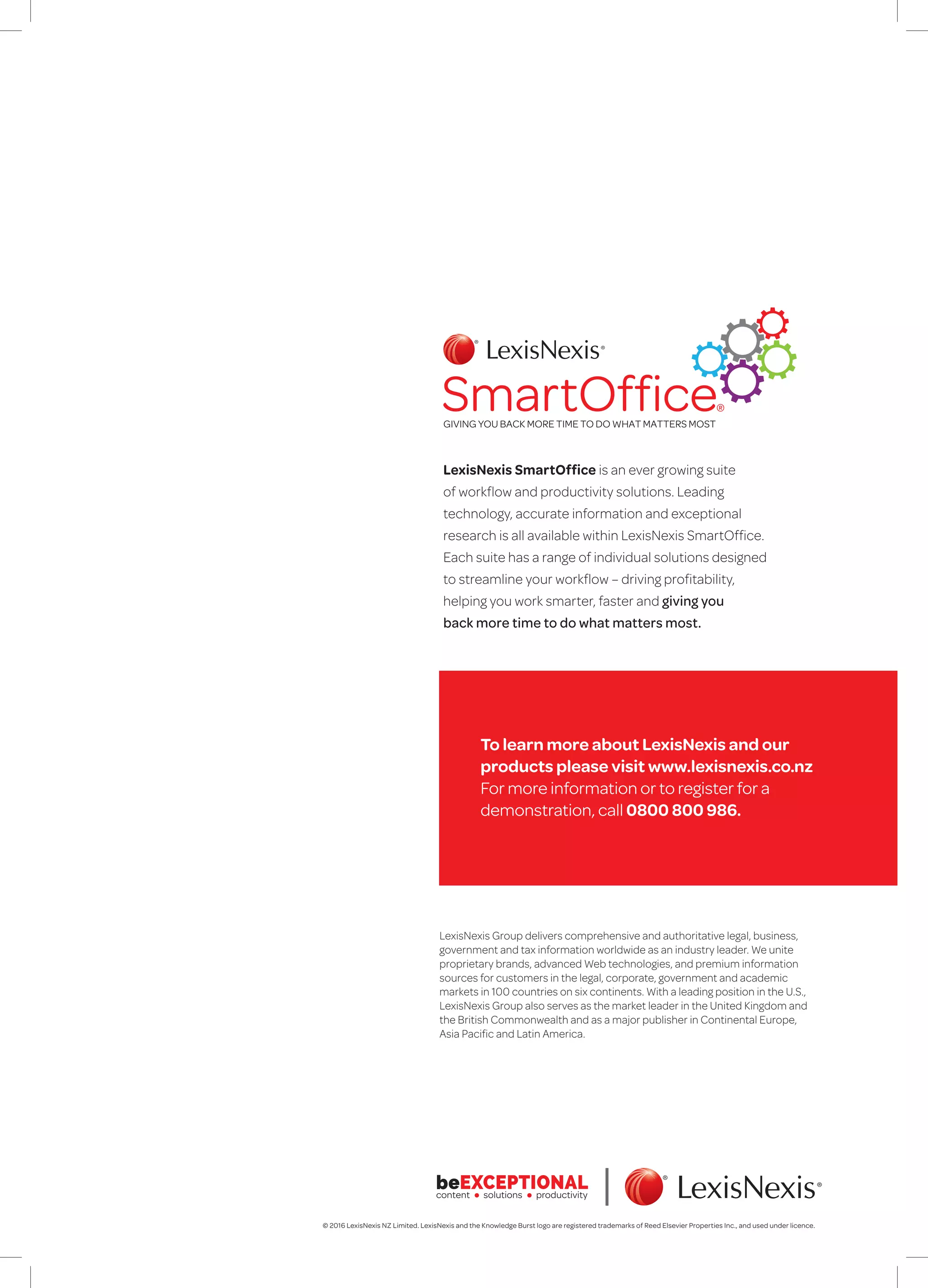The document summarizes the key findings of a survey conducted by LexisNexis Pacific in 2014/2015 regarding workflow and productivity challenges facing law firms. The survey found that the top initiatives used by law firms to improve efficiency were technology, knowledge management, and staff training. It also identified that the main goal for law firms and in-house legal teams is to make each individual lawyer more productive and efficient. The document explores how optimizing technology resources, talent management, and modifying staff roles can help achieve greater efficiency.




